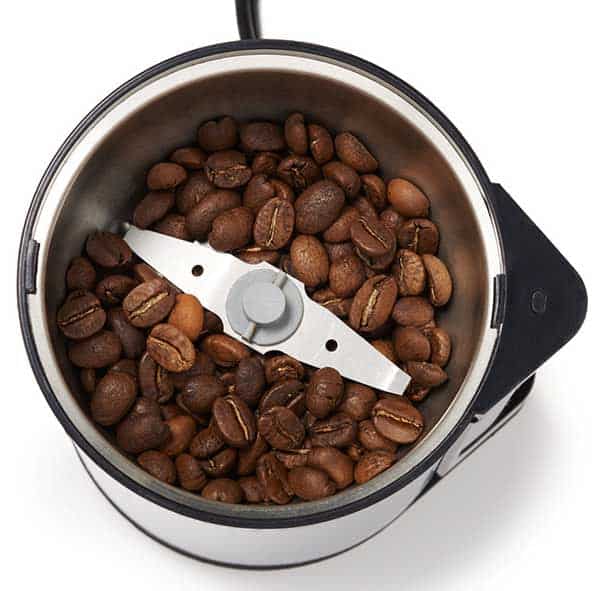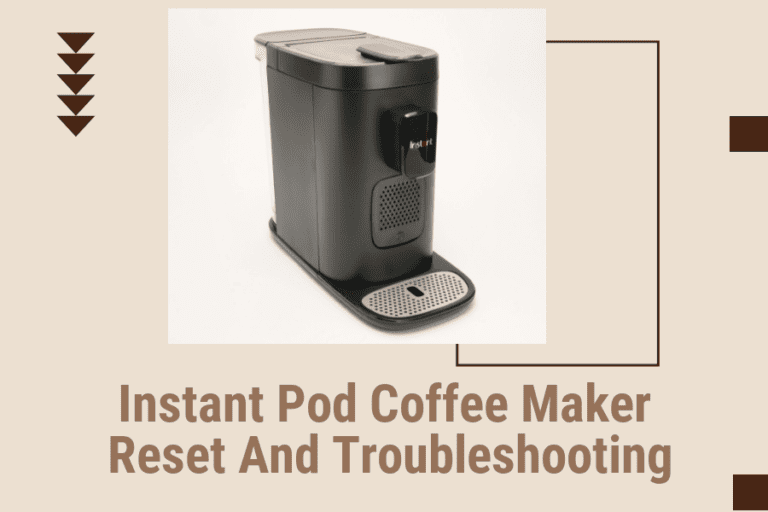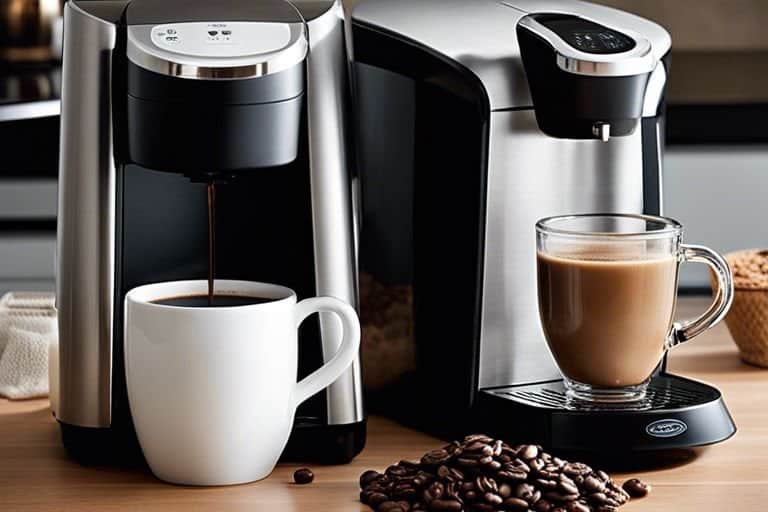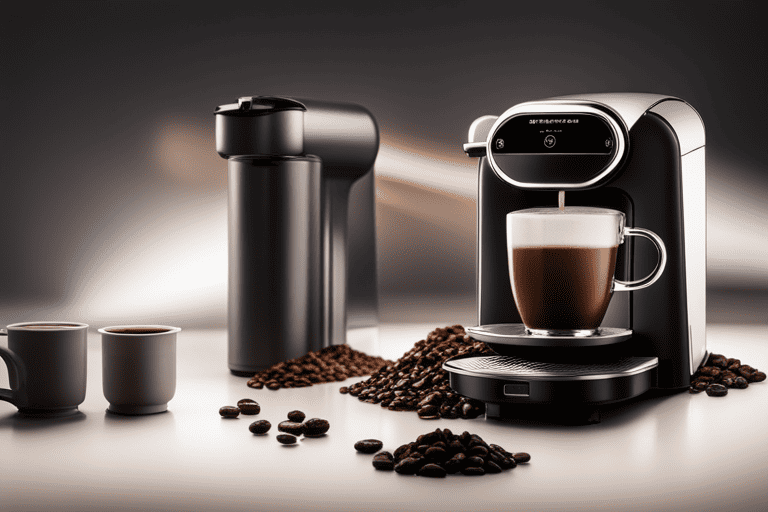Whole Coffee Beans vs Ground: Which is Better for Your Brew?
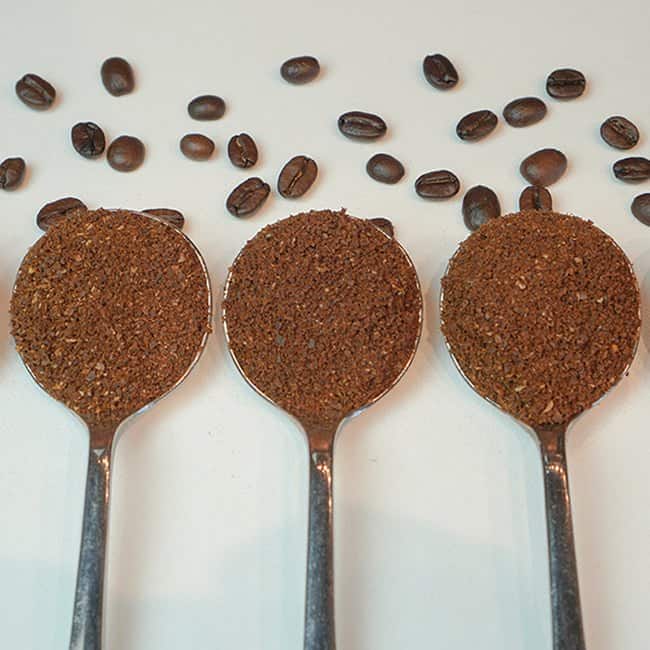
There is nothing quite like the aroma of freshly brewed coffee to start your day off right. But when it comes to purchasing coffee, there are two main options to choose from: whole coffee beans or ground coffee. While both options can produce a great cup of coffee, there are differences between the two that can impact the overall taste and quality. In this article, we will explore the differences between whole coffee beans and ground coffee to help you make an informed decision about which is right for you.

Whole coffee beans are exactly what they sound like – coffee beans that have not been ground into a fine powder. When you buy whole coffee beans, you have the option of grinding them yourself, which can be done with a coffee grinder or a mortar and pestle. Grinding the beans just before brewing can result in a fresher and more flavorful cup of coffee. On the other hand, if you don’t have a grinder or the time to grind your own beans, pre-ground coffee may be the better option for you.
Pre-ground coffee, as the name suggests, is coffee that has already been ground into a fine powder. This option is convenient, as it can save you time and effort in the morning. However, pre-ground coffee may not be as fresh as whole coffee beans, as the grinding process can cause the coffee to lose some of its flavor and aroma over time. Additionally, pre-ground coffee may not be as customizable as whole coffee beans, as you are limited to the grind size that the coffee has been pre-ground to.
Understanding Coffee: Whole Bean and Ground

As coffee enthusiasts, we know that the quality of the coffee beans is essential in determining the taste and aroma of the final product. When it comes to coffee, there are two main types: whole bean and ground coffee. In this section, we’ll dive into the differences between the two and help you understand which one is right for you.
Whole Bean Coffee
Whole bean coffee is exactly what it sounds like – coffee beans that haven’t been ground. These beans are roasted to perfection and then packaged without being broken down. This means that the beans retain their natural oils and flavors, resulting in a more complex and robust cup of coffee.
When you buy whole bean coffee, you have the freedom to grind the beans yourself. This gives you control over the grind size, which is important for determining the brewing method and the strength of the coffee. Additionally, whole bean coffee has a longer shelf life than pre-ground coffee, as the beans are less exposed to air and moisture.
Ground Coffee
Pre-ground coffee is coffee that has already been ground and is ready for brewing. While it may be more convenient, pre-ground coffee has a shorter shelf life as the beans are more exposed to air and moisture. Additionally, the grinding process releases the coffee’s natural oils and flavors, which can lead to a less complex and flavorful cup of coffee.
Ground coffee is ideal for those who want a quick and easy cup of coffee without the hassle of grinding beans. However, it’s important to note that the grind size is already predetermined, which can limit the brewing methods and the strength of the coffee.
Which One is Right for You?
Ultimately, the choice between whole bean and ground coffee comes down to personal preference and convenience. If you’re looking for a more complex and flavorful cup of coffee, whole bean coffee is the way to go. However, if you’re short on time or don’t have a grinder, pre-ground coffee may be a better option.
No matter which one you choose, it’s important to store your coffee properly to ensure maximum freshness. Keep your coffee in an airtight container away from light, heat, and moisture. And remember, the quality of the coffee beans is just as important as the brewing method, so choose wisely.
The Role of Grinding in Coffee Preparation

When it comes to coffee preparation, the grinding process plays a crucial role in determining the quality of the final product. Grinding coffee beans is what releases the flavorful oils and aromas that make coffee so enjoyable. Without proper grinding, coffee can taste weak, bitter, or sour.
Grinding Process
The grinding process involves breaking down coffee beans into smaller particles to increase the surface area of the bean. This allows for more efficient extraction of the coffee’s flavor and aroma during brewing. The size of the coffee particles determines how quickly the flavor and aroma are extracted.
Different brewing methods require different grind sizes. For example, espresso requires a fine grind, while French press requires a coarse grind. Grinding coffee beans too fine or too coarse can result in an unpleasant taste.
Types of Grinders
There are two main types of coffee grinders: blade grinders and burr grinders. Blade grinders use a spinning blade to chop the coffee beans into smaller pieces. Burr grinders use two revolving abrasive surfaces to crush the beans.
Burr grinders are generally considered to be superior to blade grinders because they produce a more consistent grind size. Consistency is important because it ensures that all the coffee particles are extracted evenly.
There are two types of burr grinders: conical and flat. Conical burr grinders are typically more expensive than flat burr grinders, but they are also considered to be superior because they produce a more even grind. Flat burr grinders are less expensive and are a good choice for those on a budget.
In conclusion, the grinding process is an important step in coffee preparation that should not be overlooked. Investing in a good quality burr grinder can make a significant difference in the quality of your coffee.
Flavor and Aroma of Coffee
When it comes to coffee, flavor and aroma are the two most important factors that determine the quality of the brew. Whole bean coffee and ground coffee differ in flavor and aroma due to the essential oils present in the coffee beans.
Whole bean coffee contains more essential oils than ground coffee, which gives it a stronger aroma and a richer flavor. The essential oils are responsible for the unique flavor profile of each coffee bean. When coffee beans are ground, the essential oils are released and evaporate quickly, resulting in a loss of flavor and aroma.
The flavor profile of coffee can vary depending on the roasting process. Lightly roasted coffee beans have a more acidic and fruity flavor, while dark roasted coffee beans have a more bitter and smoky flavor. Whole bean coffee allows you to experience the full range of flavors and aromas present in the coffee beans.
In contrast, ground coffee has a more consistent flavor profile, making it a popular choice for commercial coffee makers. Ground coffee is also easier to prepare and requires less equipment than whole bean coffee.
In conclusion, the flavor and aroma of coffee are essential factors that determine the quality of the brew. Whole bean coffee offers a richer flavor and stronger aroma due to the essential oils present in the coffee beans. Ground coffee, on the other hand, offers a more consistent flavor profile and is easier to prepare.
Brewing Method and Grind Size
When it comes to brewing coffee, the grind size plays a crucial role in determining the taste and strength of the coffee. The grind size affects the surface area of the coffee that is exposed to water, which in turn affects the rate of extraction. Different brewing methods require different grind sizes to achieve the best results.
French Press
French press coffee requires a coarse grind size. The coffee grounds need to be large enough so that they don’t pass through the mesh filter, which can result in a gritty texture. A coarse grind size also allows for a longer brewing time, which helps to extract the full flavor of the coffee.
Espresso
Espresso requires a very fine grind size. The coffee grounds need to be fine enough so that the water can pass through quickly, but not so fine that the water is unable to pass through at all. A fine grind size also allows for a shorter brewing time, which helps to prevent over-extraction.
Pour Over
Pour over coffee requires a medium-fine grind size. The coffee grounds need to be fine enough to allow for a good extraction, but not so fine that the water passes through too quickly. A medium-fine grind size also allows for a consistent flow rate, which is important for achieving a balanced flavor.
Cold Brew
Cold brew coffee requires a coarse grind size. The coffee grounds need to be large enough to prevent over-extraction, which can result in a bitter taste. A coarse grind size also allows for a longer brewing time, which helps to extract the full flavor of the coffee.
Standard Coffeemaker
Standard coffeemakers require a medium grind size. The coffee grounds need to be fine enough to allow for a good extraction, but not so fine that the water passes through too quickly. A medium grind size also allows for a consistent flow rate, which is important for achieving a balanced flavor.
Aeropress
Aeropress coffee requires a fine grind size. The coffee grounds need to be fine enough to allow for a good extraction, but not so fine that the water is unable to pass through at all. A fine grind size also allows for a shorter brewing time, which helps to prevent over-extraction.
Percolator
Percolator coffee requires a coarse grind size. The coffee grounds need to be large enough to prevent over-extraction, which can result in a bitter taste. A coarse grind size also allows for a longer brewing time, which helps to extract the full flavor of the coffee.
In summary, the grind size is an important factor in determining the taste and strength of the coffee. Different brewing methods require different grind sizes to achieve the best results. A fine grind size is required for espresso and Aeropress, a medium-fine grind size is required for pour over, a medium grind size is required for standard coffeemakers, and a coarse grind size is required for French press, cold brew, and percolator.
Freshness and Shelf Life of Coffee
As coffee beans are exposed to air, they begin to lose their freshness and flavor. This is due to oxidation, which causes the coffee to go stale. Whole coffee beans have a longer shelf life than ground coffee due to their lower surface area, which reduces their exposure to air and slows down the oxidation process.
Freshly roasted coffee beans are at their peak flavor within a few days of roasting. After that, the flavor begins to degrade. Whole coffee beans can last for a few weeks to several months if stored properly in an airtight container away from light and moisture. Ground coffee, on the other hand, can only last for a few days to a week, as it has a larger surface area that is exposed to air and causes it to go stale more quickly.
To maintain the freshness and flavor of whole coffee beans, it is best to grind them just before brewing. This allows for maximum flavor extraction and ensures that the coffee is as fresh as possible. Pre-ground coffee, while convenient, does not offer the same level of freshness and flavor as freshly ground coffee.
In summary, the shelf life and freshness of coffee depend on how it is stored and whether it is whole or ground. Whole coffee beans have a longer shelf life and can last for several months if stored properly, while ground coffee only lasts for a few days to a week. Freshly roasted coffee beans are at their peak flavor within a few days of roasting and should be used as soon as possible.
Cost and Convenience
When it comes to cost and convenience, ground coffee often takes the lead. Pre-ground coffee is available in several brands and flavors, offering a convenient and cost-effective solution to your daily coffee fix. On the other hand, whole bean coffee requires extra effort to grind before brewing, which can be time-consuming and requires additional equipment.
However, if you are a coffee connoisseur, you may prefer whole bean coffee as it tends to taste fresher and more flavorful than pre-ground. Whole beans also retain more of the flavor and fragrance before grinding, so they will stay fresh in your pantry for longer. If you decide to purchase whole bean coffee, it is important to invest in a quality grinder to ensure a consistent grind size and avoid over-extraction or under-extraction.
When it comes to price, the cost of whole bean coffee is generally higher than pre-ground coffee. For example, a 12-ounce bag of whole bean coffee from a specialty coffee shop might cost around $15 to $20, while a similar-sized bag of pre-ground coffee from a grocery store could range from $7 to $10. However, it is important to consider the quality of the coffee and the brewing method when comparing prices.
In summary, the choice between whole bean and ground coffee ultimately comes down to personal preference and priorities. If convenience and cost are your top concerns, pre-ground coffee may be the best option for you. However, if you value freshness and flavor, investing in a quality grinder and purchasing whole bean coffee may be worth the extra effort and cost.
Quality and Specialty Coffee
When it comes to quality and specialty coffee, whole bean coffee is the clear winner. Single origin coffee beans, which come from a specific region or even a specific farm, are often sold as whole beans. This is because the unique flavor profiles of these beans can be best appreciated when they are freshly ground. Coffee blends, on the other hand, are often sold pre-ground because the flavor profiles of the different beans have already been blended together.
For coffee connoisseurs and coffee lovers, the freshness and flavor of the coffee are of utmost importance. Whole bean coffee allows us to control the grind size and ensure that the coffee is as fresh as possible. Pre-ground coffee, even if it is high quality, loses flavor and aroma much more quickly than whole bean coffee. This is because the oils and aromatics in the coffee are exposed to air, which causes them to break down and lose their potency.
In addition, specialty coffee roasters often sell their coffee as whole beans because they want to showcase the unique flavors and characteristics of each bean. By selling whole beans, they are encouraging their customers to take the time to grind the beans themselves and appreciate the full flavor profile of the coffee.
Overall, when it comes to quality and specialty coffee, whole bean coffee is the way to go. It allows us to fully appreciate the unique flavors and characteristics of each bean, and ensures that we are getting the freshest possible cup of coffee.
Storage and Cleaning
When it comes to storing coffee beans, the key is to keep them fresh for as long as possible. Whole beans are generally considered to be the best option for freshness, as they retain their flavor and aroma better than ground coffee. To store whole beans, we recommend keeping them in an opaque, airtight container in a cool, dry place away from direct sunlight, heat, and moisture. This will help prevent the beans from oxidizing and losing their flavor.
On the other hand, ground coffee has a larger surface area exposed to air, which means it can quickly lose its flavor and aroma. Therefore, it is essential to store ground coffee in an airtight container to prevent moisture and air from getting in. We recommend using a container made of ceramic, stainless steel, or glass. These materials are non-reactive and will not affect the flavor of your coffee. Additionally, storing coffee in the freezer is not recommended as it can cause moisture to accumulate on the beans, which can affect the flavor and aroma.
Cleaning your coffee equipment is also essential for maintaining the quality of your coffee. Coffee grinders, in particular, can be challenging to clean, especially if they are not cleaned regularly. We recommend cleaning your grinder after each use to prevent the buildup of coffee oils, which can affect the flavor of your coffee. To clean your grinder, you can use a brush or a damp cloth to remove any coffee residue. Additionally, you can use a cleaning tablet specifically designed for coffee grinders to remove any remaining oils and residue.
In summary, storing and cleaning your coffee equipment is essential for maintaining the quality of your coffee. When storing coffee beans, it is important to keep them in an airtight container away from direct sunlight, heat, and moisture. For ground coffee, an airtight container made of ceramic, stainless steel, or glass is recommended. Cleaning your coffee equipment regularly, especially your grinder, is also important for preventing the buildup of coffee oils and maintaining the flavor of your coffee.
Health Benefits and Environmental Impact
When it comes to health benefits, both whole coffee beans and ground coffee have their advantages. Whole coffee beans contain more antioxidants than ground coffee due to their protective outer layer, which is removed during the grinding process. Antioxidants help to protect our cells from damage caused by free radicals, which can contribute to chronic diseases such as cancer and heart disease. Additionally, coffee has been linked to a reduced risk of type 2 diabetes, liver disease, and Parkinson’s disease.
On the other hand, when it comes to environmental impact and sustainability, whole coffee beans are the better choice. Coffee production is a resource-intensive process that requires large amounts of water, energy, and land. By choosing whole coffee beans, we can help to reduce the amount of waste generated during the coffee production process. When coffee is ground, it is exposed to air, which causes it to lose flavor and aroma over time. As a result, many coffee companies use nitrogen-flushed packaging to preserve the freshness of their ground coffee. This packaging is not biodegradable and can contribute to environmental pollution.
In addition to the environmental impact of coffee production, the coffee industry has also been criticized for its treatment of workers. Many coffee farmers are paid very low wages and work in unsafe conditions. By choosing coffee that is certified as fair trade or organic, we can help to support sustainable and ethical coffee production practices.
Overall, while both whole coffee beans and ground coffee have their advantages, choosing whole coffee beans is the more sustainable and environmentally friendly choice. Additionally, by choosing fair trade or organic coffee, we can help to support ethical coffee production practices and ensure that coffee farmers are paid a fair wage for their work.
Customization and Coffee Equipment
When it comes to coffee, customization is key. Whole bean coffee allows us to have complete control over the grind size, which can be adjusted to suit our personal preferences and brewing equipment. This is particularly important for espresso machines, where the grind size can greatly impact the quality of the shot. With whole beans, we can experiment with different grind sizes until we find the perfect one for our machine.
On the other hand, pre-ground coffee is limited in terms of customization. It comes in a standard grind size, which may not be suitable for all brewing equipment. For example, a fine grind may work well for espresso machines, but not for drip coffee makers. Similarly, a coarse grind may be ideal for French press, but not for espresso.
When it comes to coffee equipment, both whole bean and pre-ground coffee can be used in a variety of machines. Drip coffee makers, pour-over devices, and French presses can all accommodate both types of coffee. However, espresso machines require a specific type of grind, which is why whole bean coffee is often recommended.
Overall, the choice between whole bean and pre-ground coffee comes down to personal preference and brewing equipment. If you have an espresso machine or want more control over your coffee’s grind size, then whole bean coffee is the way to go. If you prefer convenience and don’t mind sacrificing some customization, then pre-ground coffee may be the better option.
